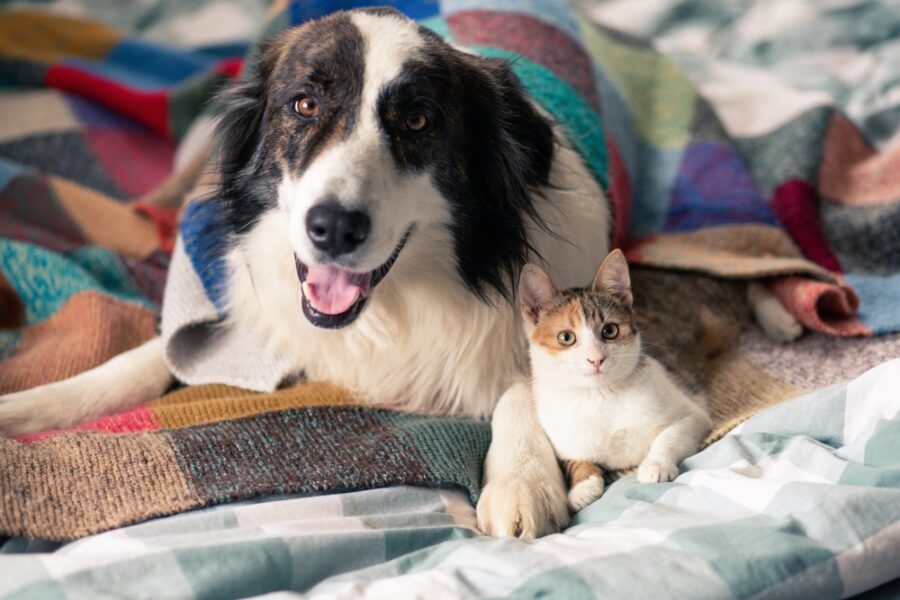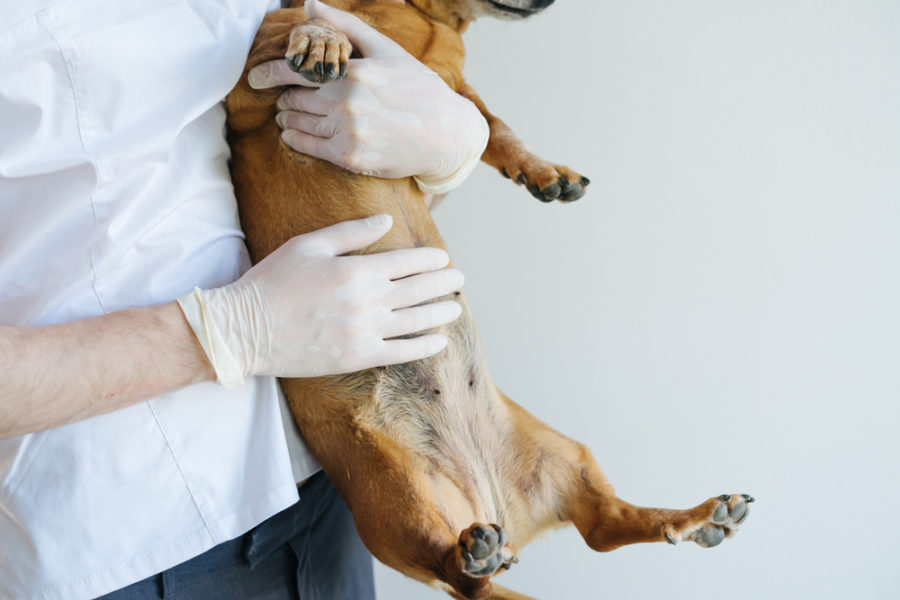In TCVM, three major patterns lead to upper respiratory tract diseases in dogs. Based on which pattern is presented by the patient, Chinese food therapy can be used to help treat the problem and resolve symptoms.
According to TCVM (Traditional Chinese Veterinary Medicine), disease is due to some type of energetic imbalance in a dogs body. The goal of TCVM food therapy is to maintain balance, or bring the dogs body back into balance. As the dog attains and maintains energetic balance, acute and chronic health challenges become less of a problem. This article focus on how Chinese food therapy can be used for upper respiratory tract disorders in our canine patients.
THE RESPIRATORY SYSTEM FROM A TCVM PERSPECTIVE
The respiratory system is associated with the element of Metal in TCVM, which consists of the Lung and Large Intestine as the target organs. The main function of the Lung is to govern Qi (energy) and respiration, while also controlling the skin and hair coat that dominate the body surface and influence the protective Wei Qi of the body. The Lung connects to the trachea and opens to the nose.1
A patient with normal Lung Qi will enjoy excellent, unobstructed respiration with a keen sense of smell. When this pathway of Lung Qi is disrupted, pathology manifests as upper or lower respiratory tract disease. The lungs are the first barrier to pathogenic invasion; they filter the air that is inhaled. Healthy lung function forms the first defense against cold and wind that assault the body. Skin forms the outer defensive layer for the body.2
lower respiratory tract disease. The lungs are the first barrier to pathogenic invasion; they filter the air that is inhaled. Healthy lung function forms the first defense against cold and wind that assault the body. Skin forms the outer defensive layer for the body.2
Infectious upper respiratory diseases are among the most common problems diagnosed and treated in small animal practice and shelter medicine. The main disorders seen are nasal congestion or discharge and cough. In TCVM, the Lungs are the organs most susceptible to invasion from external pathogens. The main disease processes seen in veterinary medicine include rhinitis, sinusitis, infectious tracheobronchitis (kennel cough), asthma, and pneumonia.
Lungs like moisture and dislike dryness, which is why the drying effect of wind has detrimental effects on the Lung system. Foods that moisturize the Lungs are especially important during the winter when the air is dry and forced air heating is used inside homes, or in dry desert environments with extremely low humidity.
Moisturizing foods are called Yin tonics and include turkey, duck, cod, clam, rabbit, alligator, shark, egg white, mussel, conch, duck egg, herring, millet, barley, brown rice, flax seed, alfalfa, spinach, broccoli, celery, mushroom, kelp, seaweed, cucumber, radish, asparagus, melons, pear, apple, blueberry, and honey.
Three major patterns in TCVM lead to upper respiratory tract disease symptoms: Wind-Cold, Wind-Heat, and Nasal Damp Heat. Wind is the master pathogen because it penetrates everywhere and goes anywhere.3 Wind often carries other pathogens into the body, such as Cold, Heat, Dryness, and Damp. It is a light pathogen, meaning it often affects the upper parts of the body.
1. Wind-Cold
External pathogens invade the body through the nose as Wind-Cold. If the Wei Qi and Lung Qi are strong enough, the body will remove the pathogens through sneezing and nasal discharge. If the Qi is not able to clear the pathogen, Cold will lead to stagnation of the discharge flow, resulting in congestion in the nasal passages and sinuses. Clinical signs may include:
- Acute onset, less than three-day course
- Nasal congestion and clear nasal discharge
- Sneezing
- Chills, aversion to cold
- Cough
- Generalized pain in the body
- Fever (may be present)
- Wet pale tongue that may be lavender or have a thin white coating
Therapy to treat Wind-Cold is aimed at unblocking the nasal passages and opening the nose. Warming foods such as chicken, lamb, venison, pumpkin, turmeric, oats, shrimp, ginger, fennel, and basil can be added to the diet. Warm ginger tea is an excellent supplement for Wind-Cold invasion.
Cold foods such as crab, clams, watermelon, barley, millet, rabbit, duck, celery, cucumber, cod, alligator, dairy, and asparagus should be avoided. For prevention, avoid overcrowding, stress, and excessive cold; always provide good ventilation.
The herbal formula Ba Wei Yu Ping Feng San can help prevent pathogen by supporting protective Wei Qi and strengthening the Spleen and Lung. Start the herbal formula two days prior to anticipated pathogen exposure, such as a kenneling situation. Dosage is 0.5 grams per 10 pounds body weight, twice daily for up to 30 days.
2. Wind-Heat
Wind-Heat occurs when Wind carries Heat into the body. This pattern can also occur if the Lung Qi and Wei Qi fail to clear the Wind-Cold pattern. The goal is to stop the pathogens before they can move deeper into the Lungs. Phlegm develops when the fluids become dry, congealed, and solidified (thick, sticky mucus). Clinical signs can include:
- Less than seven-day course
- Congestion
- Sneezing
- Strong cough
- Trouble breathing
- Fever
- Dry stool and dark urination
- Warm air noted on exhalation
- Nasal congestion with thick yellow discharge that may contain blood
- Red, dry tongue that may have a yellow coating
Treating Wind-Heat involves clearing heat, stopping cough, resolving Phlegm, and eliminating nasal congestion. Foods to clear heat include turkey, cod, clam, scallop, alligator, rabbit, spinach, asparagus, honey, peppermint, and white radish. Foods that help resolve Phlegm include clams, pears, ground almonds, Daikon radish, kelp, mustard greens, Shiitake mushrooms, and cabbage.
Avoid hot foods or foods that generate Phlegm, including chicken, lamb, shrimp, venison, dairy, white rice, oats, ginger, garlic, pumpkin, and winter squash. An herbal tea of honeysuckle flower, hawthorn berry, and honey can be added to food to activate the immune system.
For prevention, avoid stress and overcrowding, and excessive heat. Provide good ventilation. The herbal formula Yin Qiao San has antiviral activities and is effective for Wind-Heat. Dosage is 0.5 grams per 10 pounds body weight, twice daily for up to 30 days.
3. Nasal Damp Heat
This pattern occurs when Wind-Cold or Wind-Heat combine with Phlegm. Prolonged exposure to Damp and Heat (dietary or environmental) can predispose a dog to this pattern. Nasal Damp Heat is more difficult to resolve than Wind-Cold or Wind-Heat. Clinical signs can include:
- A more chronic state
- Thick, yellow nasal discharge/congestion
- Anorexia (lack of appetite)
- Ulceration of the gums
- Obesity
- Diarrhea
- Red tongue with a greasy coating
Treatment is aimed at clearing Damp and Heat, resolving congestion, and promoting appetite. Foods that are cooling and drain Damp include asparagus, celery, cucumber, pear, lettuce, clam, turkey, cod, scallop, rabbit, duck, turnip, apple, barley, ground almonds, honey, and Shiitake mushroom. Avoid dairy, sweet foods, lamb, and venison.
The herbal formula Zhu Shi Tong Qiao Fang can be used for this condition.4 Dosage is 0.5 grams per ten pounds body weight for up to 30 days. This formula clears Wind-Cold and Damp Heat, and transforms Phlegm.
Small additions to the diet, based on TCVM pattern presentation, can make a big difference in the pets ability to fight off pathogens and remain healthy in the face of stress and exposure during kenneling, showing, and daycare situations.








